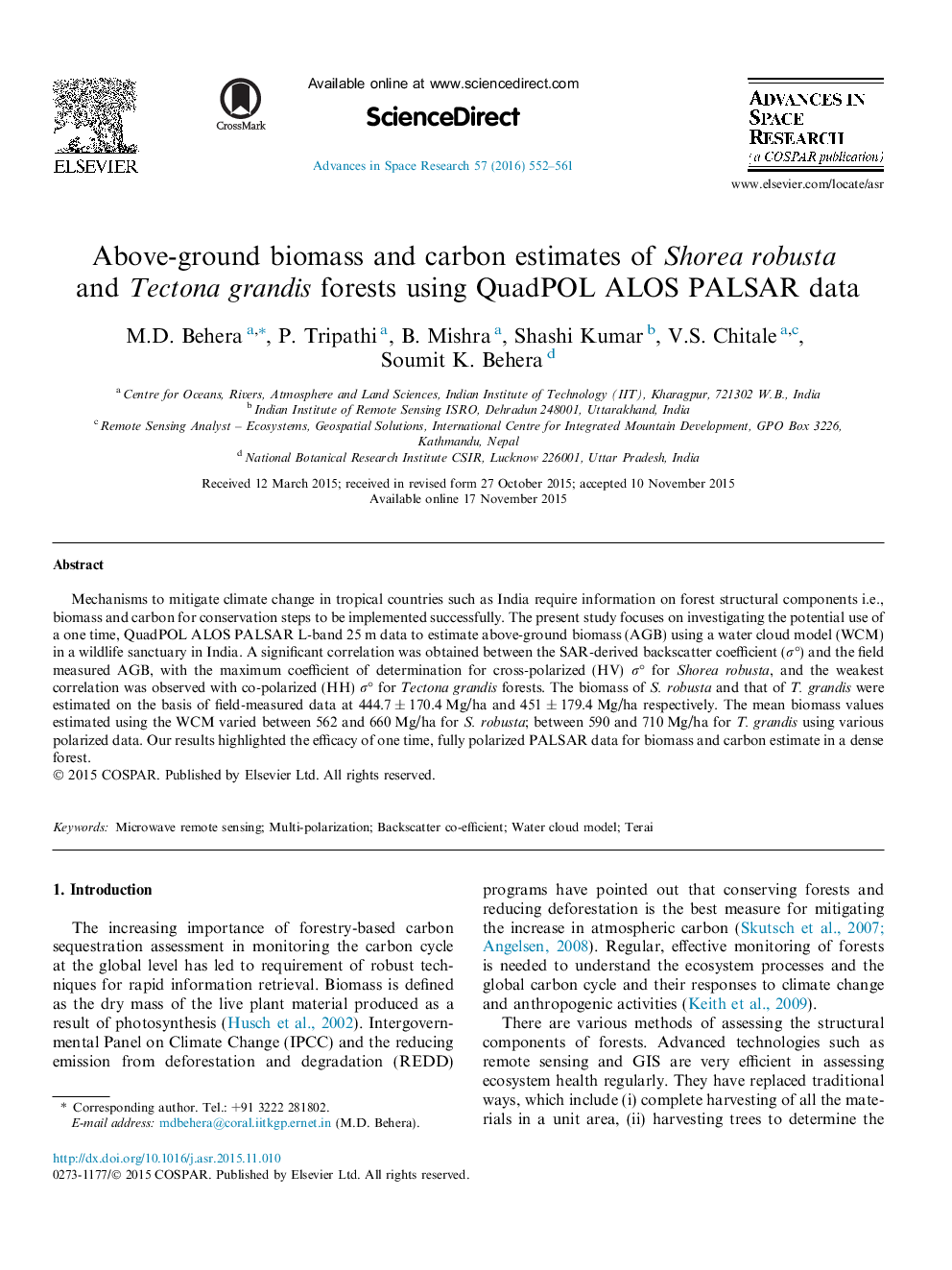| Article ID | Journal | Published Year | Pages | File Type |
|---|---|---|---|---|
| 10694133 | Advances in Space Research | 2016 | 10 Pages |
Abstract
Mechanisms to mitigate climate change in tropical countries such as India require information on forest structural components i.e., biomass and carbon for conservation steps to be implemented successfully. The present study focuses on investigating the potential use of a one time, QuadPOL ALOS PALSAR L-band 25 m data to estimate above-ground biomass (AGB) using a water cloud model (WCM) in a wildlife sanctuary in India. A significant correlation was obtained between the SAR-derived backscatter coefficient (Ï°) and the field measured AGB, with the maximum coefficient of determination for cross-polarized (HV) Ï° for Shorea robusta, and the weakest correlation was observed with co-polarized (HH) Ï° for Tectona grandis forests. The biomass of S. robusta and that of T. grandis were estimated on the basis of field-measured data at 444.7 ± 170.4 Mg/ha and 451 ± 179.4 Mg/ha respectively. The mean biomass values estimated using the WCM varied between 562 and 660 Mg/ha for S. robusta; between 590 and 710 Mg/ha for T. grandis using various polarized data. Our results highlighted the efficacy of one time, fully polarized PALSAR data for biomass and carbon estimate in a dense forest.
Related Topics
Physical Sciences and Engineering
Earth and Planetary Sciences
Space and Planetary Science
Authors
M.D. Behera, P. Tripathi, B. Mishra, Shashi Kumar, V.S. Chitale, Soumit K. Behera,
